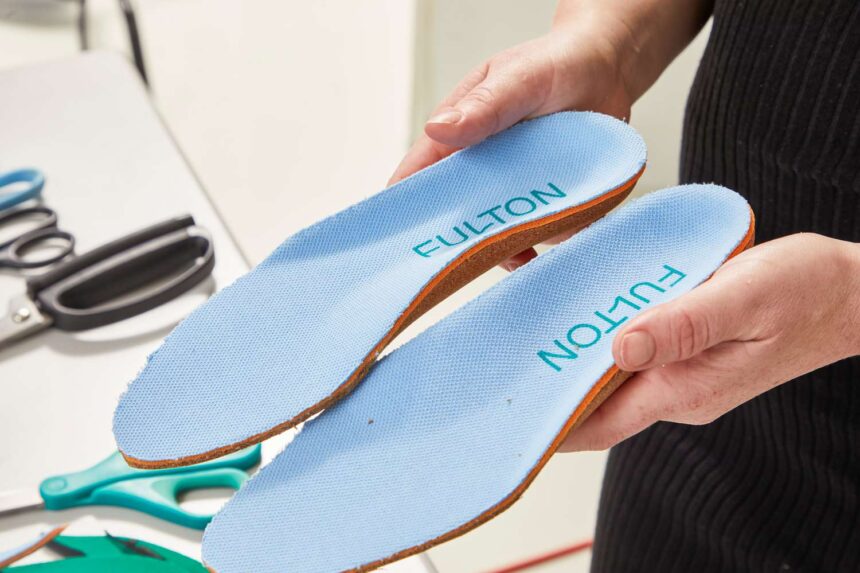Plantar fasciitis can be a tough condition to manage, often causing discomfort and hindering daily activities. While there are various treatment options available, selecting the appropriate insoles can significantly alleviate symptoms and promote healing. However, the process of choosing the right insoles for Plantar Fasciitis requires careful consideration of several factors to ensure effectiveness. This article explores the essential aspects to consider and common mistakes to avoid when selecting insoles for pain relief.
Understanding Plantar Fasciitis
Before selecting insoles, it’s crucial to understand plantar fasciitis. It is a prevalent foot ailment marked by inflammation of the plantar fascia, a robust tissue band spanning the underside of the foot, linking the heel bone to the toes. This inflammation often results in heel pain, especially with the initial steps in the morning or after periods of inactivity.
Factors to Consider When Choosing Insoles
- Arch Support: Opt for ones with appropriate arch support to lessen the pressure on the plantar fascia. Arch support distributes weight uniformly across the foot and reduces strain on the inflamed tissue.
- Cushioning: Look for ones with ample cushioning to provide shock absorption and reduce impact while walking or standing. Cushioned insoles can help alleviate pain and discomfort associated with the condition.
- Firmness: Strike a balance between firmness and flexibility. While firmness provides stability and support, flexibility ensures comfort and proper foot movement.
- Corrective Features: Consider insoles with corrective features, such as heel cups or wedges, to promote proper foot alignment and lessen strain on the plantar fascia. These features can help address biomechanical issues contributing to plantar fasciitis.
- Material: Choose insoles made from high-quality, durable materials that offer both comfort and support. Materials like foam, gel, or silicone provide cushioning and resilience, enhancing overall foot comfort.
- Size and Fit: Ensure proper sizing and fit when selecting insoles to maximise their effectiveness. Insoles that are too small or too large may not provide adequate support or comfort, leading to further discomfort.
- Breathability: Consider insoles with breathable materials to prevent moisture buildup and keep the feet cool and dry. Adequate ventilation helps reduce the risk of fungal infections and odours, especially during prolonged wear.
- Compatibility: Verify compatibility with your footwear before purchasing insoles. Some insoles may be designed for specific types of shoes, like athletic shoes or dress shoes, so it’s essential to choose options that fit seamlessly into your preferred footwear.
Common Mistakes to Avoid
- Ignoring Symptoms: One common mistake is ignoring the symptoms of plantar fasciitis or attempting to self-diagnose without seeking professional guidance. Consulting a healthcare expert for an accurate diagnosis and appropriate treatment recommendations is crucial.
- Opting for One-Size-Fits-All Solutions: Another mistake is assuming that all insoles are created equal or opting for generic, one-size-fits-all solutions. Each individual’s foot anatomy and biomechanics are unique, so choosing insoles tailored to your specific needs and preferences is essential.
- Neglecting Proper Footwear: Neglecting to invest in supportive footwear can exacerbate the symptoms and render insoles less effective. It’s important to wear shoes that provide adequate support, cushioning, and stability, especially during periods of activity.
- Overlooking Lifestyle Factors: Lifestyle factors such as activity level, occupation, and daily habits can influence the choice of insoles. For example, individuals with jobs that require prolonged standing or walking may benefit from insoles designed for maximum cushioning and support.
- Failing to Gradually Adjust: When introducing new insoles, it’s essential to allow time for the feet to adjust gradually. Abruptly transitioning to highly supportive insoles may cause discomfort or exacerbate existing symptoms.
- Not Seeking Professional Advice: Some individuals may overlook the significance of seeking professional advice from podiatrists or orthopedic specialists when selecting insoles. These healthcare professionals can provide valuable insights and recommendations based on individual foot conditions and biomechanics.
- Choosing Fashion Over Function: Prioritizing fashion or aesthetics over functionality when selecting footwear or insoles can compromise foot health and aggravate the symptoms. It’s essential to prioritise comfort, support, and proper fit over style considerations.
- Ignoring Maintenance and Replacement: Neglecting to maintain and replace insoles regularly can diminish their effectiveness over time. It’s essential to follow manufacturer recommendations for cleaning and replacement to ensure optimal support and cushioning.
Choosing the right insoles for Plantar Fasciitis involves careful consideration of various factors, including arch support, cushioning, firmness, corrective features, material, size and fit, breathability, and compatibility with footwear. By avoiding common mistakes and prioritising foot health and comfort, individuals can find relief from plantar fasciitis symptoms and improve overall quality of life. Remember to consult healthcare professionals for personalised recommendations and guidance tailored to your needs and preferences.






